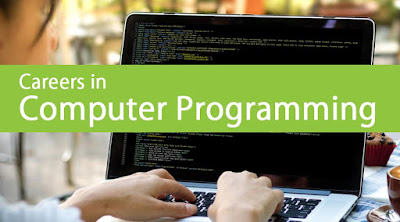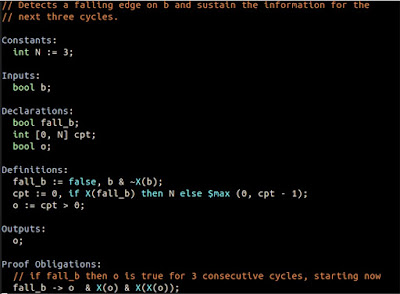Computer programming
Computer programming is the process of designing and building an executable computer program to accomplish a particular computing result or to perform a particular task. Programming involves tasks such as analysis, generating algorithms, profiling algorithms' accuracy and resource consumption, and also the implementation of algorithms in an exceedingly chosen artificial language (commonly spoken as coding). The source code of a program is written in one or more languages that are intelligible to programmers, rather than computer code, which is directly executed by the central processing unit. often for solving a given problem. Proficient programming thus often requires expertise in several different subjects, including knowledge of the applying domain, specialized algorithms, and formal logic.
It’s software on your computer that runs your operating system, browser, email, games, movie player – almost about everything. Programming could be a creative task: there is no right or wrong way to solve a problem, in the same way, that there is no right or wrong thanks to painting a picture. There are choices to be made, and a technique could appear better than another, but that doesn’t mean the other is wrong! With the correct skills and skills, a programmer can craft software to resolve a limitless number of problems – from telling you when your next train will arrive at playing your favorite music. the probabilities are constrained only by your imagination. That’s why I like programming.
Programming Languages About
All PCs work by following machine language programs, a long arrangement of guidelines called machine code that is addressed to the equipment of the PC and is written in paired documentation (see numeration ), which utilizes just the digits 1 and 0. Original dialects, called machine dialects, required the composition of long strings of double numbers to address such activities as "add," "take away," "and look at." Later upgrades permitted octal, decimal, or hexadecimal portrayal of the parallel strings. Since composting programs in machine language are unfeasible (it is dreary and mistake inclined), representative, or gathering, dialects—secondage dialects—were presented in the mid-1950s. They utilize basic mental aides, for example, A for "add" or M for "duplicate," which are converted into machine language by a PC program called a constructing agent. The constructing agent then, at that point transforms that program into a machine language program. An augmentation of such a language is the full-scale guidance, a memory helper, (for example, "READ") for which the constructing agent substitutes a progression of easier mental aides. the subsequent machine language programs, be that as it may, are explicit to one kind of PC and will generally not run on a PC with an alternate sort of focal preparing unit (CPU).
High-Level Languages
The absence of convenience between various PCs prompted the advancement of undeniable level dialects—supposed on the grounds that they allowed a developer to overlook some lowlevel subtleties of the PC's equipment. Further, it was perceived that the nearer the linguistic structure, rules, and memory aides of the programming language could be to "normal language" the more outlandish it turned into that the software engineer would accidentally present blunders (called "bugs") into the program. Henceforth, during the 1950s the third era of dialects came into utilization. These algorithmic, or procedural, dialects are intended for taking care of a specific kind of issue. In contrast to machine or representative dialects, they shift little between PCs. they should be converted into machine code by a program called a compiler or mediator. Early PCs were utilized solely by researchers, and the principal significant level language, Fortran [Formula translation], was created (1953–57) for logical and designing applications by John Backus at the IBM Corp. A program that dealt with recursive calculations better, LISP [LISt Processing], was created by John McCarthy at the Massachusetts Institute of Technology in the mid 1950s; carried out in 1959, it has become the standard language for the manmade brainpower local area. COBOL [COmmon Business-Oriented Language], the main language proposed for business applications, is still generally utilized; it was created by an advisory group of PC makers and clients under the initiative of Grace Hopper, a U.S. Naval force software engineer, in 1959. ALGOL [ALGOrithmic Language], created in Europe around 1958, is utilized basically in math and science, as is APL [A Programming Language], distributed in the united states in 1962 by Kenneth Iverson. PL/1 [Programming Language 1], created in the last part of the 1960s by the IBM Corp., and ADA [for Ada Lovelace], created in 1981 by the U.S. Dept. of Defense, are intended for both businesses and logical use.
Essential [Beginner's Allreason Symbolic Instruction Code] was created by two Dartmouth college educators, John Kemeny and Thomas Kurtz, as a showing apparatus for students (1966); it thusly turned into the essential language of the PC insurgency. In 1971, Swiss teacher Nicholas Wirth fostered a more organized language for instructing that he named Pascal (for French mathematician Blaise Pascal, who constructed the main effective mechanical adding machine). Modula 2, a Pascal-like language for business and numerical applications, was presented by Wirth in 1982. Ten years before that, to execute the UNIX working framework, Dennis Ritchie of Bell Laboratories created a language that he called C; alongside its augmentations, called C++, created by Bjarne Stroustrup of Bell Laboratories, it has maybe become the most broadly utilized universally useful language among proficient software engineers in light of its capacity to manage the afflictions of article situated programming. Java is an item arranged language like C++ however improved to dispense with highlights that are inclined to programming mistakes. Java has grown explicitly as an organization arranged language, for composing programs that can be securely downloaded through the internet also, promptly run unafraid of PC infections. Utilizing little Java programs called applets, World Wide Web pages can be fostered that incorporate a full scope of sight and sound capacities.
Fourthage dialects are nonprocedural—they indicate what is to be cultivated without depicting how. The first, FORTH, created in 1970 by American space expert Charles Moore, is utilized in logical and modern control applications. Most fourthage dialects are composed for explicit purposes. Fifthage dialects, which are as yet in their earliest stages, are an outgrowth of manmade reasoning research. PROLOG [PROgramming LOGic], created by French PC researcher Alain Colmerauer and philosopher Philippe Roussel in the mid-1970s, is helpful for programming consistent cycles and making derivations naturally. Numerous different dialects have been intended to address specific issues. GPSS [General Purpose System Simulator] is utilized for demonstrating physical and ecological occasions, and SNOBOL [StringOriented Symbolic Language] is intended for design coordinating and list preparing. LOGO, a variant of LISP, was created during the 1960s to assist youngsters with learning PCs. PILOT [Programmed Instruction Learning, Or Testing] is utilized recorded as a hard copy informative programming, and Occam is a nonsequential language that advances the execution of a program's directions in equal preparing frameworks.
There are additionally procedural dialects that work exclusively inside a bigger program to redo it's anything but a client's specific requirements. These incorporate the programming dialects of a few data set and factual projects, the prearranging dialects of interchanges programs, and the full-scale dialects of wordpreparing programs.









No comments:
Post a Comment